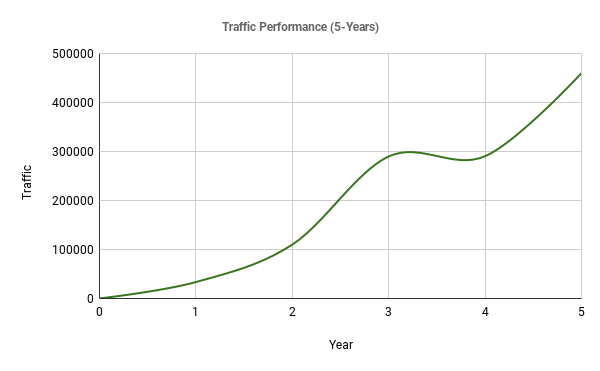
Expand your brand’s global reach with strategic international SEO.
International SEO is crucial for brands looking to connect with audiences across borders, optimizing your site to appear in search results for multiple languages and regions without relying solely on ad campaigns.
Unlike standard SEO, international SEO requires a tailored strategy that addresses language, cultural nuances, and regional search behaviors. This involves elements like geo-targeting, hreflang tags, and localized content that resonate with specific markets.
With the right approach, your global brand can increase visibility across regions, engage diverse audiences, and drive meaningful conversions from international traffic ready to connect with your offerings.
75% of users do not make important purchasing decisions unless the product description is in their own language.1
As businesses increasingly expand across borders, international SEO has become essential for capturing diverse audiences and gaining visibility in multiple markets. With the rise in global e-commerce and the ease of cross-border transactions, brands must optimize their websites to reach users in different regions, each with unique search behaviors, languages, and cultural nuances.
By strategically targeting international keywords and tailoring content to resonate locally, businesses can achieve stronger market penetration and improve customer engagement worldwide.
By optimizing for multiple markets, brands can build a strong, localized online presence that fosters trust, drives conversions, and establishes a foundation for sustained global growth.
Advantages of SEO for International Markets
International SEO offers unique advantages that allow businesses to expand their reach, connect with diverse audiences, and increase brand visibility in new markets. By tailoring SEO strategies to target multiple regions, companies can position themselves effectively on a global stage.
- Broader Market Reach: Optimizing for international SEO helps brands reach diverse markets and engage audiences worldwide, extending brand visibility far beyond domestic boundaries.
- Localized Content Resonance: By creating region-specific content and utilizing localized keywords, brands can connect with international audiences in a way that feels relevant to them.
- Enhanced Brand Credibility: Appearing in local search results fosters trust among users in each region.
- Improved Conversion Opportunities: International SEO can drive conversions by optimizing content, messaging, and offerings that align with each market’s preferences and unique intents.
- Growth Potential Across Borders: With international SEO, businesses have the flexibility to enter and grow in new markets without a physical presence, making it a cost-effective method for global expansion.
Global SEO Challenges and Watch Outs
Optimizing for international markets presents unique challenges that require careful planning and adaptation to ensure content is relevant and discoverable across different regions and search engines.
- Language and Cultural Nuances: Effective international SEO requires understanding regional languages, dialect, and cultural context. Otherwise, messaging can be misunderstood or appear irrelevant and less trustworthy to users in target regions.
- Technical Hurdles with Hreflang and Localization: Implementing hreflang tags and setting up localized URLs is essential but can be technically complex. Errors in configuration can lead to indexing issues or confusion in search engine crawlers, impacting visibility.
- Differences in Search Behavior: Search behavior varies across regions. Keywords and search intent that perform well domestically may not resonate internationally.
- Increased Competition in Global Markets: Competing with established local brands in international markets can be challenging.
- Legal and Regulatory Compliance: Each country has different data privacy laws, content standards, and regulations that must be observed.
TechAudits can take your global brand to the next level.
Get started with managed SEO services today.
What makes International SEO different from targeting only domestic rankings?
International SEO requires a tailored approach to reach diverse audiences across countries and languages. Unlike SEO at a local or national level, targeting a single market, global SEO strategies are crafted to address regional nuances, search behaviors, and language preferences, helping brands resonate with audiences in multiple regions.
Key to international SEO is localization—adapting content to reflect cultural differences, relevant keywords, and the appropriate tone for each market. It’s far more than a simple translation. This builds trust and relevance, allowing content to connect authentically with each audience.
Elements of international SEO involve setting up hreflang tags, localized URLs, and geo-targeted keywords to ensure global visibility and compliance across different regions.
Effective international SEO begins with comprehensive keyword research tailored to each market. Keywords may not translate effectively across regions, requiring in-depth research to capture local language variations, slang, and search intent. This goes beyond simple translation to ensure that each region’s SEO strategy aligns with user behavior.
- Cultural Relevance: Choose keywords that resonate with the local audience.
- Search Volume Analysis: Understand which terms are most popular in each target market.
- Synonym Optimization: Use variations to capture broader local search intent.
Hreflang tags signal to search engines which language and region each page version targets, preventing duplicate content issues and ensuring users see the most relevant version of your site. This is critical for maintaining SEO value across multiple language versions of a site.
- Proper Tag Setup: Use hreflang tags correctly to avoid search engine confusion.
- Multiple Language Pages: Ensure every localized page has the correct hreflang tag.
- Regional Prioritization: Prioritize target regions to enhance user experience.
To connect with different regions effectively, URLs can be structured by country code top-level domains (ccTLDs), subdirectories, or subdomains based on the international SEO strategy. This helps search engines prioritize local relevance, improving regional search performance.
- ccTLDs for Specific Countries: Use country-specific domains (like .fr for France).
- Subdirectories or Subdomains: Organize content to ensure international visibility and easy management.
- Localized User Experience: Reflect each target country’s needs and preferences.
There are pros and cons to different methods of segmenting regional content.
Building backlinks from local, reputable sites boosts domain authority in specific regions and improves local rankings. Focusing on link-building campaigns within each region adds authenticity and relevance to your brand.
- Regional Partnerships: Collaborate with local sites and influencers.
- Directories and Industry Sites: Gain visibility by getting listed on local sites.
- Social Proof: Local citations and mentions help establish trust in each region.
Presenting prices in local currencies and using relevant measurement units improve user experience and trust. A seamless experience encourages conversions by showing users content that feels tailored to their specific region.
- Currency Display: Show prices in the local currency to reduce friction.
- Localized Units: Use metric or imperial units as appropriate.
- Automatic Conversion: Enable dynamic conversions for greater accuracy.
Different regions may have unique privacy and legal requirements (e.g., GDPR in Europe, CCPA in California). International SEO strategies must ensure compliance to avoid penalties and build trust with users.
- GDPR and Data Privacy: Include consent mechanisms for regions like the EU.
- Content Restrictions: Ensure compliance with content regulations in certain countries.
- User Trust: Highlight transparency and adherence to local policies to reassure users.
TechAudits has helped global brands optimize their websites for international markets to dominate their target regions.
See how TechAudits has driven significant revenue and value for our clients by checking out our case studies.
Read Case Studies




